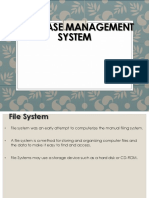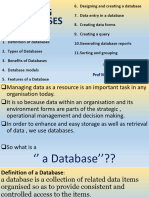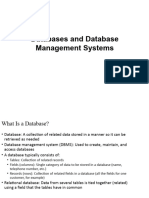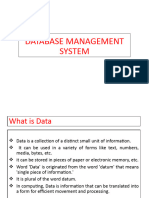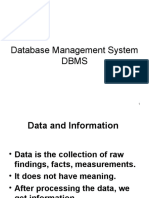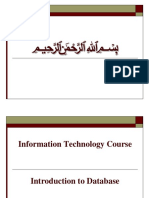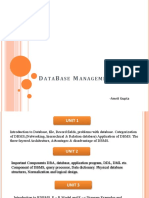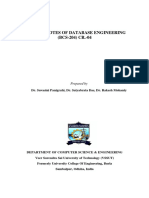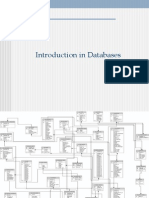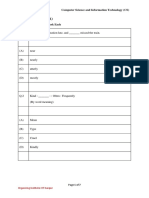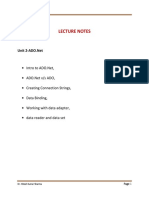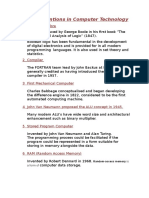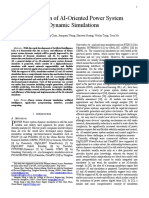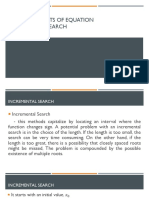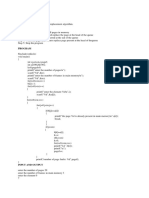0% found this document useful (0 votes)
18 views3 pagesIntroduction To Databases
The document discusses the significance of data storage and the role of Database Management Systems (DBMS) in improving data management. It outlines various database models, including flat file, hierarchical, network, relational, and object-oriented models, along with their structures and examples. Additionally, it highlights features of DBMS software, such as data organization, security, and user interface components.
Uploaded by
levi makokhaCopyright
© © All Rights Reserved
We take content rights seriously. If you suspect this is your content, claim it here.
Available Formats
Download as PDF, TXT or read online on Scribd
0% found this document useful (0 votes)
18 views3 pagesIntroduction To Databases
The document discusses the significance of data storage and the role of Database Management Systems (DBMS) in improving data management. It outlines various database models, including flat file, hierarchical, network, relational, and object-oriented models, along with their structures and examples. Additionally, it highlights features of DBMS software, such as data organization, security, and user interface components.
Uploaded by
levi makokhaCopyright
© © All Rights Reserved
We take content rights seriously. If you suspect this is your content, claim it here.
Available Formats
Download as PDF, TXT or read online on Scribd
/ 3





